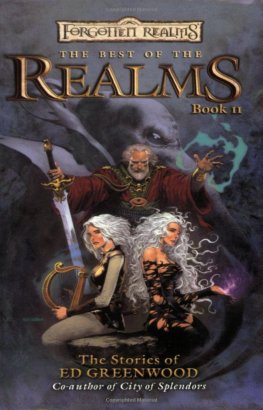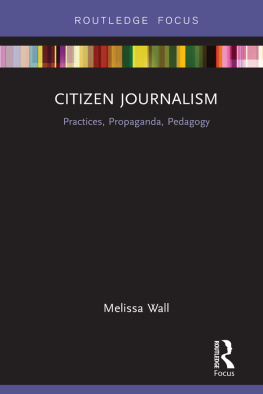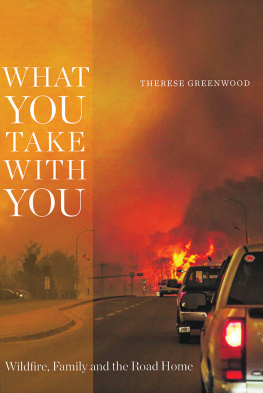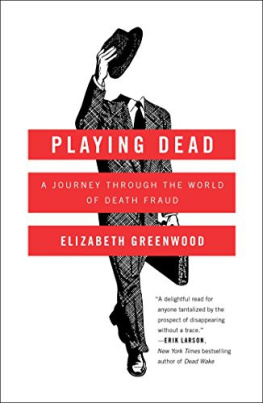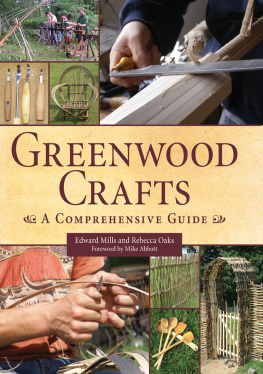Future Journalism
Future Journalism investigates where journalism has come from, where it is now and where it might be going, through a range of case studies on organisations pushing the traditional boundaries of journalism, including Vice, BuzzFeed, Bellingcat, The Washington Post, the Guardian, Circa and Narrative Science. Sue Greenwood presents an analysis of the significant trends and practices shaping contemporary journalism and investigates what they can tell us about possible new directions for the news industry in the future.
Chapters explore:
- the rise of new business models for digital news production and their future;
- debates around the potential for non-human journalists;
- the fluctuating figures around news consumption by audiences and what they can mean;
- the growing importance of ethical journalism in the digital age;
- practical exercises and recommended further reading.
In a constantly evolving media environment, this book guides readers through some of the most vital contemporary debates and important technological developments. It is essential reading for students and young professionals preparing for a future in the journalism industry.
Sue Greenwood is a senior lecturer in the School of Journalism at Staffordshire University, UK. She teaches and specialises in digital and future journalism. Before joining academia, Sue spent over 25 years working in the media, from news papers, news websites and community television, to radio. As an entrepreneur, she has launched two publishing start-ups.
First published 2018
by Routledge
2 Park Square, Milton Park, Abingdon, Oxon OX14 4RN
and by Routledge
711 Third Avenue, New York, NY 10017
Routledge is an imprint of the Taylor & Francis Group, an informa business
2018 Sue Greenwood
The right of Sue Greenwood to be identified as author of this work has been asserted by her in accordance with sections 77 and 78 of the Copyright, Designs and Patents Act 1988.
All rights reserved. No part of this book may be reprinted or reproduced or utilised in any form or by any electronic, mechanical, or other means, now known or hereafter invented, including photocopying and recording, or in any information storage or retrieval system, without permission in writing from the publishers.
Trademark notice : Product or corporate names may be trademarks or registered trademarks, and are used only for identification and explanation without intent to infringe.
British Library Cataloguing-in-Publication Data
A catalogue record for this book is available from the British Library
Library of Congress Cataloging-in-Publication Data
A catalog record for this book has been requested
ISBN: 978-1-138-67871-2 (hbk)
ISBN: 978-1-138-67872-9 (pbk)
ISBN: 978-1-315-55877-6 (ebk)
Typeset in Bembo
by Apex CoVantage, LLC
1
Where We Came from and Where We are Now
In Will Steacys striking photo-essay Deadline, the slow decline of the Philadelphia Inquirer is captured over five years. Beginning in 2009, Steacy photographed the newsroom through shrinking sales, bankruptcy, and round after round of staffing culls.
His father was among those to lose their job as the newspaper, founded in 1829, shed staff like a second skin: from around 700 employees in the 1990s, to just over 200 by the time Steacy began his project. In his online introduction, Steacy (2016) writes about newspapers as the fastest shrinking industry in America and laments the human cost of technological changes:
When we lose reporters, editors, newsbeats and sections of papers, we lose coverage, information, and a connection to our cities and our society.The newspaper is much more than a business, it is a civic trust.
Steacys photographs of the decline of the Pulitzer-winning Inquirer could be seen as a visual metaphor for the wider decline of the newspaper industry in the US and elsewhere.
Perhaps.
While it is true that newspapers in the US and the UK have shed hundreds of thousands of jobs since 1990, what we have also seen is a news business that has shifted and changed and evolved in directions unimaginable in 2009.
Take the picture in of Deputy Science and Medicine Editor Don Sapatkin in 2009. The desk is piled high with papers and books and notes, spilling out of boxes, wrapping around that bulky computer, drifting onto neighbouring desks. Almost a caricature of the working journalist.

Don Sapatkin, Deputy Science and Medicine Editor, 6:44pm, 2009. Photo by Will Steacy.
But this was not a photograph of a disappearing world, this was a photograph of a world that had already arrived.
In 2009, the World Wide Web had been public for 18 years, Google for 11 years, and Facebook for five. Twitter had been going for three years (Sapatkin himself joined Twitter in 2009), but Snapchat wouldnt arrive for another two. Despite those piles of print, the Inquirer was already part of a world in which information and content was largely digital, public and shared.
By 2011, Sapatkins desk () had not only lost its paper mountain but Sapatkin had lost his place as primary source of public health news for his public, who now had access to acres of information online much of it from the same sources he might use and at the time they wanted to access it.
Sapatkins role was no longer just digging up health news stories and writing about them, but about finding those stories in new places and sources, and delivering the information in new ways. By 2015, he was marrying the fashionably new data journalism with old-style contact-chasing to deliver Clean Plates an online project enabling instant access for the Inquirers readers to official restaurant inspection reports.
Creating a restaurant report look-up tool may not sound like high-end, President-toppling journalism (although a mistake in reporting a restaurant inspection report provided a valuable lesson in journalistic technique for the pre-Watergate Bob Woodward). But journalism delivers information stories as well as news stories, and knowing whether that restaurant where you plan to take your family has a clean kitchen is an information story that matters.

Don Sapatkin, 3:10pm, 2011. Photo by Will Steacy.
Its that issue of how and why journalism matters that is worth hanging on to here.
Steacys photographs may have captured the slow death of newspapers, but that does not mean that journalism is also dying. Changing certainly, shrinking perhaps, but not dying. This book is called Future Journalism because journalism has a future as well as a past.
While there may have been fewer job openings at the Inquirer in 2016, its summer internships programme included ads for Digital Interns, and an Audience Development Intern tasked with identifying social media influencers and spotting viral stories. The job of the traditional newspaper journalist has changed, but so too has the range and types of jobs in journalism. Todays journalism graduate is just as likely to find her or himself monitoring a websites comment threads as taking shorthand notes in a court case.






